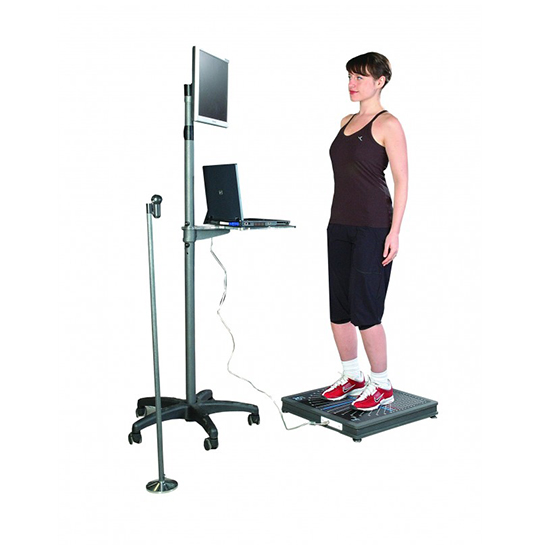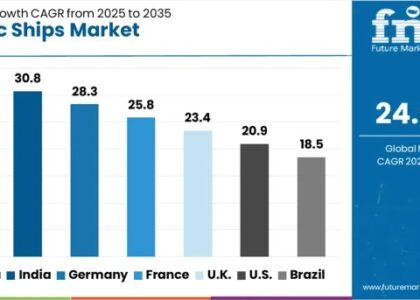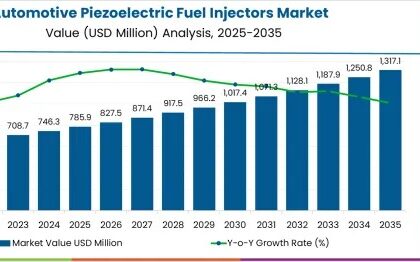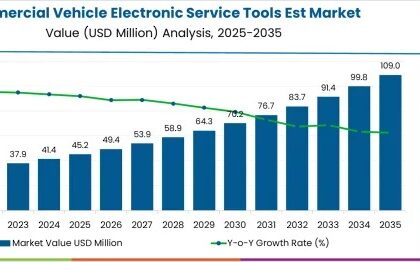The Global Stabilometric Platform Industry is poised for unprecedented growth, with an estimated value of around US$ 1.19 billion in 2023. A recent market analysis indicates a remarkable surge, foreseeing the market share to reach an impressive US$ 2.42 billion by 2033. This trajectory is backed by a robust Compound Annual Growth Rate (CAGR) of 7.3%.
A Stabilometric Platform is a device that measures subjects’ body movements using a stabilometer (in a standing position), assuming the stabilometer is a force-measuring platform. The platform has a flat and regular surface that is attached to four force transduction systems. The proper balance of the human body is critical. This correct balance necessitates the collaboration of the nerve, musculoskeletal system, and balance organs. This necessitates constant monitoring by the central nervous system.
High blood pressure has an impact on all aspects of the balance system. The central nervous system regulates the body’s vertical position by slightly shifting the centre of gravity. Using appropriate movement strategies, the correct position of the centre of gravity is obtained. The presence of hypertension impairs the functioning of the control system, resulting in the appearance of the first symptoms of losing control over the body’s balance. A test on a stabilometric platform can be used to detect this symptom.
Request a Sample of this Report Now!
https://www.futuremarketinsights.com/reports/sample/rep-gb-5047
A force measuring platform is a device similar to a weighing scale that quantifies the centre of pressure using a set of force transducers. The analysis of the centre of pressure is part of the stabilometric platform evaluation. This centre of pressure reflects the motor pattern at the ankle, and the central nervous system responds to correct the body’s centre of mass imbalance. Stabilometric platforms collect information about a person’s postural control and balance. Data obtained from the stabilometric platform has resulted in a few medical advances. However, because the data obtained cannot be analysed directly, some data analysis techniques must be used. Balance control is a sophisticated neuronal mechanism based on both unconditional and conditioned reflexes. Because the mechanism requires the participation of brain regions, posture support mechanism training can be a highly effective tool for rehabilitation.
The stabilometric platform is widely used for training balance skills with visual biofeedback. The stabilometric platform automatically evaluates parameters such as the length of the ideal trajectory, trial type, target point location, speed and length of the real trajectory of the projections of the centre of gravity between the target points. The designations used to indicate the direction of body movements during stabilometric platform measurements are Left (L), Right (R), Anterior (A), and Posterior (P) (P). These guidelines are always defined from the subject’s perspective. The use of a stabilometric platform is a reproducible and objective method for assessing and documenting balance skills. The stabilometric platform allows for the localization of the person’s centre of gravity on the ground projection, the dynamics and localization of the centre of gravity of each foot, load distribution between the left and right foot, and so on. This data can be used to evaluate vestibular, postural, dental, and podiatric dysfunctions, as well as orthopaedic and pathologies.
Initially, the stabilometric platform was only used to assess patient balance and postural control. However, it is now recognised as a valuable tool for treating and diagnosing balance disorders.
Reach Out to Our Analyst For Your Queries
https://www.futuremarketinsights.com/ask-the-analyst/rep-gb-5047
Global Stabilometric Platform Industry: Drivers and Restraints
The global stabilometric platform market is expanding as people become more aware of the various diagnosis options for balance and postural control disorders. The market for stylometric platforms is being driven by factors such as improved quality of life, functional independence, and increased awareness of balance skills, among others. However, the high cost of equipment and the scarcity of skilled personnel to operate these platforms are likely to stymie market growth.
Global Stabilometric Platform Industry: Overview
Stabilometric platforms are the most accurate equipment in testing balance disorders. Based on the types, the Global Stabilometric Platform Industry is segmented into single-function and multi-function. Multi-function stabilometric platform is the most widely used stabilometric platform type across the globe.
Stabilometric Platform Industry: Regional Overview
North America, Latin America, Western Europe, Eastern Europe, Asia-Pacific excluding Japan, Japan, and the Middle East and Africa are the regions where the Global Stabilometric Platform Industry is divided. North America is expected to dominate the market during the forecast period due to the high acceptance of innovative devices and an increase in the geriatric population. The Western European market for stylometric platforms is expected to be the second largest. The Asia Pacific market is expected to grow steadily due to the current low awareness of balance and postural control techniques, as well as low healthcare expenditure.
Global Stabilometric Platform Industry: Key Players
Some of the players identified in the Global Stabilometric Platform Industry include MEDI-CARE SOLUTIONS srl, Sensing Future Technologies, TECHNO CONCEPT, Vertigomed, WOODWAY, Easytech srl, Biodex, Man&Tel, Framiral, Vestibular Research & Development, LLC. (Balanceback), Techmed, etc.
Request Your Customized Report Now!
https://www.futuremarketinsights.com/customization-available/rep-gb-5047
Global Stabilometric Platform Industry Key Segments
By Types:
- Single function
- Multi-function
By End User:
- Hospitals
- Rehabilitation Centers
- Nursing Homes
By Regions:
- North America
- Europe
- Asia Pacific
- Latin America
- META
Why Future Market Insights?
- Comprehensive analysis of evolving purchase patterns across different geographies
- Detailed insights of market segments and sub-segments for historical as well as forecast period
- A competitive analysis of prominent players and emerging players in the keyword market
- Detailed information about the product innovation, mergers and acquisitions lined up in upcoming years
Author
Sabyasachi Ghosh (Associate Vice President at Future Market Insights, Inc.) holds over 12 years of experience in the Healthcare, Medical Devices, and Pharmaceutical industries. His curious and analytical nature helped him shape his career as a researcher.
Identifying key challenges faced by clients and devising robust, hypothesis-based solutions to empower them with strategic decision-making capabilities come naturally to him. His primary expertise lies in areas such as Market Entry and Expansion Strategy, Feasibility Studies, Competitive Intelligence, and Strategic Transformation.
Holding a degree in Microbiology, Sabyasachi has authored numerous publications and has been cited in journals, including The Journal of mHealth, ITN Online, and Spinal Surgery News.
About Future Market Insights (FMI)
Future Market Insights, Inc. (ESOMAR certified, recipient of the Stevie Award, and a member of the Greater New York Chamber of Commerce) offers profound insights into the driving factors that are boosting demand in the market. FMI stands as the leading global provider of market intelligence, advisory services, consulting, and events for the Packaging, Food and Beverage, Consumer Technology, Healthcare, Industrial, and Chemicals markets. With a vast team of over 5,000 analysts worldwide, FMI provides global, regional, and local expertise on diverse domains and industry trends across more than 110 countries.
Contact Us:
Future Market Insights Inc.
Christiana Corporate, 200 Continental Drive,
Suite 401, Newark, Delaware – 19713, USA
T: +1-845-579-5705
For Sales Enquiries: sales@futuremarketinsights.com
Website: https://www.futuremarketinsights.com
LinkedIn| Twitter| Blogs | YouTube






